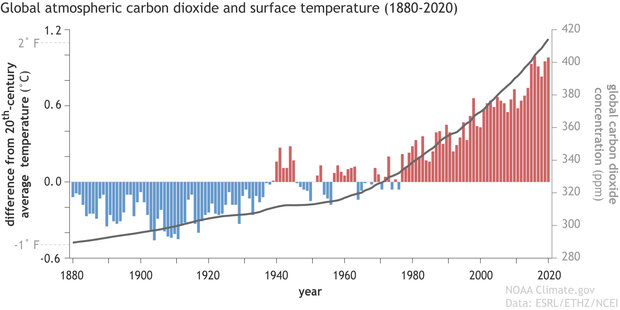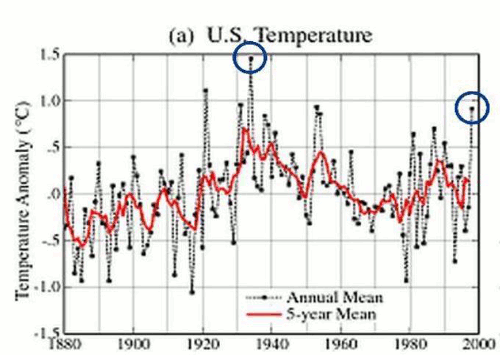I've explained numerous times INCLUDING in my post above.
YOU are the Liar/deceiver/Denier.
There are many cycles within the larger Trend, OF COURSE. 11 Year solar cycles, el Ninos, etc.
Not to mention no large natural trend goes straight up.
If I point out the stock market on average rise 7-8% a year, you can no doubt point to bad decades or even 20 year periods when this is contradicted.
Does not change the FACT.
Go it now @sshole?
You do but your politics are SICK and brainwashed.
Here's a link for you, YOU dum pos.
If carbon dioxide hits a new high every year, why isn’t every year hotter than the last?
NOVEMBER 23, 2021
NOAA/Climate.gov
Just like your car doesn’t reach top speed the instant you step on the gas, Earth’s temperature doesn’t react instantly to each year’s new record-high carbon dioxide levels.
Thanks to the high heat capacity of water and the huge volume of the global oceans, Earth’s surface temperature resists rapid changes. Said another way, some of the excess heat that greenhouse gases force the Earth’s surface to absorb in any given year is hidden for a time
by the ocean. This delayed reaction means rising greenhouse gas levels don’t immediately have their full impact on surface temperature. Still, when we step back and look at the big picture, it’s clear the two are tightly connected.
As the graph above shows, both global temperature (colored bars) and atmospheric carbon dioxide (gray line) increased more slowly during the first half of the observational record in the late nineteenth and early twentieth centuries. Atmospheric carbon dioxide levels rose by around 20 parts per million over the 7 decades from 1880–1950, while the temperature increased by an average of 0.04° C per decade.

Yearly temperature compared to the twentieth-century average (red and blue bars) from 1880–2019, based on data from NOAA NCEI, plus atmospheric carbon dioxide concentrations (gray line): 1880-1958 from
IAC, 1959-2019 from
NOAA ESRL. Original graph by Dr. Howard Diamond (NOAA ARL), and adapted by NOAA Climate.gov.
Over the next 7 decades, however, carbon dioxide climbed nearly 100 ppm—5 times as fast! To put those changes in some historical context, the amount of rise in carbon dioxide levels since the late 1950s would naturally, in the context of
past ice ages, have taken somewhere in the range of 5,000 to 20,000 years; we’ve managed to do it in about 60. At the same time, the rate of warming averaged 0.14° C per decade. The rapid rate of temperature rise over such a short period time points to only one thing, and that is the addition of greenhouse gases, primarily carbon dioxide, into the environment.
Within any given decade, however, the temperature bounces around between warm and cool years. The warmest years are usually El Niño years, when the eastern and central tropical Pacific is warmer than average. The coldest years are generally La Niña years. On a longer time scale, warm decades are often associated with strongly positive phases of the Pacific Decadal Oscillation, and cool decades with strongly negative phases.
[..........]
[..........]
[..........]""
global_temps_ENSO_yrs_1240.gif | NOAA Climate.gov
Thanks to the global oceans, Earth's surface temperature doesn't react instantly to the full impact of a climate disturbance. That delayed reaction has pros and cons.

www.climate.gov
You are Persistently Dishonest, or Partisan (or Stupld) and get this explained regularly but try to abuse it for political purpose.
`
EDIT:
Note the Picture Troll/Evolution denier CrusaderFrank's 3 Trolling/canned picture posts above.
He is NON-CONVERSANT on this topic/cannot carry a simple conversation.
`


